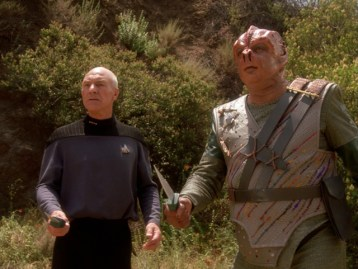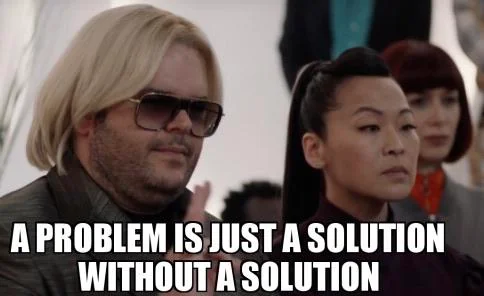
A2A
A2A is to Agent to Agent as B2C is Business to Consumer as B2B is Business to Business.
The digit 2 is used instead of the word “to”, and in each context, A refers to agents, B to business, and C to consumer.
So what?
Do the distinctions matter?
If you have no strategy and don’t care, then no. It doesn’t matter. Signals about demand are irrelevant so they’re spam.
If you’re building a strategy, and care about an outcome, then maybe, it could matter. Because understanding how people understand their needs and to value values [1] when assessing whether or not to search or be receptive to a solution, to consider yours versus substitutes (including nothing), to decide if the total cost is worth it (that a net gain exists for them on the other side of the transaction) and to tell all their friends about you.
The distinction between B, Business People, and C, Customers, lays in the context. Business People are people. Customers are people. In one context, they want to own a perfect monopoly, so as to extract the maximum surplus from society. In the other, they want to consume from an economy with perfect competition, so as to extract the maximum surplus from society. In this way, they’re entirely self-consistent. They’re rationally seeking to extract the maximum surplus. Just look at it from your own multiple perspectives.
Ah, but in the B context, the modern corporation features controls that mitigate risk and make sure that no employee can be too effective….I mean, surely, there is always a perfectly optimal amount of oversight and strategic guidance when it comes to nurturing strong initiatives from anywhere in the org…. I can’t even… The Business context involves a lot of sense-making, credit-arrangements and accountability distribution. To be maximally generous about this friction: alignment amongst people takes time because the status quo exists for as many reasons as there are people telling you stories about those reasons. B2B sales involves orchestrating a departure from the status quo within the prospectively buying organization. Well. If you know, you know.
Ah, but in the C context….the modern household features….controls that mitigate risk and make sure that no family member can be too effective at addressing their own needs…I mean….there’s always a perfectly optimal amount of oversight and strategic guidance when it comes to nurturing strong initiatives anywhere in the family…so, households are a lot like businesses in some ways. And different in other ways.
Life changing purchases often get more attention that a small, single time, one. So, whether it’s the office coordinator choosing to order in from Pumpernickle’s versus Kettleman’s for a bagel sandwich lunch for that terrible all-day onsite, Tim buying a Fortnite skin, the HR department engaging on an RFP process to replace six terrible systems with two terrible systems, or the Lao Gong wanting an Audi — different contexts involve different amounts of attention and talking.
In this way, sometimes the distinctions matter. And sometimes they don’t.
What’s the A?
A is for Agent.
Who does the Agent represent?
A Business or a Consumer? Both? Neither?
Maybe?
And suddenly the AI Alignment issue becomes incredibly relevant. Funny how that works.
In 2008, when agents of the business were all human, the long suffering middle manager lost a huge amount of discretionary power. CFO’s celebrated. Boards were warned. There was a dominant perception that all of the experimentation that the middle and the front lines were doing was a cost that needed to be relentlessly controlled. And can’t we hire a consultancy to do that for us?

“Post-it Notes, 3M, the $10,000 signing authority.”
And so they devised increasingly elaborate rules to both reduce cost, boost alignment, and increase certitude. What happens when you increase the barriers to doing anything new? You reduce anything new getting done! Pretty simple. The system works as intended.
They certainly increased alignment.
They certainly reduced exploration.
Those rules were never loosened. And in fact, they appear to become even more constricted in 2025. In fact, human creativity has been throttled by bureaucratic certitude to an incredible degree. Even, mysteriously, in creative industries themselves. And it’s against this backdrop that artificially intelligent agents will be deployed.
In 2026, 2027, 2028, maybe, agents of the business could be increasingly bots instead of humans. If they can be aligned. Can you imagine an agentic procurement agent engaging automagically within any one of the ten thousand agentic market places (until a single player consolidates distribution for reasons that involve safety, certainty, alignment, capture, and shut up)?
We may think of procurement as not having a lot of creativity to it, but if you know, you know. This isn’t going to stop anybody from trying to agentify procurement.
Some agentic creativity may be inevitable. And what’s far more likely to happen is that bots will learn how to coordinate [2] their prices faster than humans enjoying a steak dinner and powerpoint ever could. And then who are regulators going to hold responsible for such an emergent property of economic agents? Who knew? Who could have seen this coming?
As a consumer, a lot of your routine payments are already automated, and the West is generally structured in such a way where the end consumer does not negotiate: they buy for the listed price or they don’t. Not all transactions are take-it-or-leave-it propositions. Coupons are certainly a negotiating technique, in which the supplier hides information about the price they’re offering and the consumer has to search for that price. That’s just one way the hunter-gatherer impulse is activated. There are other hide and seek games they play. Some people spend hours searching for the best flight deal using a sequence of intermediary and intermediary-intermediary engines. They gotta get the deal. And then post-hoc justify an upgrade having found the deal. Business travel, leisure travel, automotive, labour, and insurance may be five sectors that feature a large number of participants with incentives to engage in a form of information arbitrage and perhaps, unconscious price coordination? After all, what happens when a number of agents across multiple companies coordinate their purchases of airfares against a set of airline agents?
As a consumer, you don’t just pay with money. You pay with your attention. It’s kind of brutal that you pay for the cost of the ad when you buy the product. The use of agents to pay attention to how you’re paying attention, if they were to be aligned with your interests, would be nice. I keep on asking it: who do you trust to manage your attention?
What’s next?
With respect to A2A, we’re pre-consolidation.
First, you’re going to hear from people who are just excited to be sharing their excited excitement about these exciting developments in the field of excitement. After all, this is clearly the most revolutionary game-changing event of in the history of games and the disruption shows no signs of ever stopping ever. If it’s July 2025 and your business isn’t already A2A enabled, you’re already dead in the water! Next stop, singularity, choo choo.
And we need those people. Even though these words are dripping with vinegar, I’m still blogging about it. Can you tell how excited I am? I’m stoked! Hypers hype and analysts analyze. We need them. And face it, you need me to mesh obscure British public television references with the best academic literature. Is this not why you are here? Are you not entertained?
Second, you’re going to hear from a lot of builders who genuinely believe that this time it will be different. They’ll democratize A2A in the new, new economy and together we’ll change the world! And a few people will see that other people’s face light up when they share a part of that vision and will learn to repeat it over and over again to get that sweet sweet social validation. And then somebody will inevitably figure out the quality attribute that aligns the incentives in the market, and the winner will take nearly all. WU! [3]
Timeline to consolidation? I don’t know, but there are a few clues.
Remember that consolidation and scale never happened in VR. Remember that? And it’s in part, when I ask the question: “Who needs VR?” the answer was usually, “Mark Z.”
Right?
Consolidation happened to the Open Web. When I ask the question: “Who needs the Open Web?” the answer was usually, “Everybody needs the open web. Internet access is a human right.” The needs that the Open Web fulfilled is better than the mud tablet, the letter, the book, the newspaper, the telegraph, and the telephone.
When I ask the question: “Who needs an economic agent?”, the answer is likely: anybody that needs money, needs to save money, or time, through an economic agent that is aligned to my interests. One that is aligned to my interests would be superior to engaging with the world using intermediary economic agents, precisely because the trust endowment has been so effectively drained for short term profit.
Expressed differently: would you trust Sam, Jeff, Mark, or Elon to manage your bank account for you? Do you trust that they’d have your best interests in mind? Your assessment matters. If the answer is yes, why? Given what we know about how non-agentic technology was already used to manipulate marketing budgets, why would one think that it would be any different when suddenly it’s agentic? Does code running on their servers suddenly become more trustable because it’s agentic? Really? Or does that generate an even better convenient reasoning shield? See, if they’re strategic, they’ll actively extract just enough rent to quench shareholder thirst and rack up a few more points on that Forbes scoreboard. But if they go too far, we only realize that it’s bad deal after its too late.
Trust takes generations to regenerate. Sure, shareholders demand its transformation into sweet sweet dividends right now. I know I do. It’s just that when you lose trust, you lose your ability to make medium and long term gains. You obliterate institutions. It’s like stealing all the copper in the electrical grid to meet next quarter’s expectations. Sure, you got the copper and you got your bonus. You got yours. But, you’ve not only screwed yourself, and everybody else, because there’s no way to move electricity around. I suspect that, for some, trust is going to be a factor. For others, in particular the convenience oriented (always a great bet), they’ll take the trade because they see value in it.
In this way, I reckon A2A is on the order of magnitude of the PC/Internet, and far less than VR or metaverse. Because A2A addresses a core need to manage, guard, optimize, organize, patrol, sense, orient, decide and act at the boundary of your firm or your household. Because A2A is itself the cause of, and solution to, it’s own set of problems. It’s a solution looking for a problem. It’s a problem looking for a solution. And everybody paying attention agrees that it’s both.

What to do?
James Burke, in entertaining us about the philosophy of science, taught me to look for how some inventions, when connected with other inventions, enables incredible breakthroughs. I think of them as streams [4] that when they cross, generate events and a telltale distribution in the adoption curve.
The rebranding of the technology formally called bots into agents, and then connecting them with API’s (rebranding seems to be contested right now…theres’s an effort to call this A2A protocol and MCP…we’ll see) and with Large Language Models (LLMs) are three streams crossing. The branding of these combinations as A2A as a container to hold them in is interesting. I’m writing about it and you’re reading it.
I don’t think we’re done yet.
Already, that combination of the three is important. It’s reshaping perception and how we relate to each other.
There’s a fourth and fifth technology that might be missing. I’d be surprised if it’s metaverse. But it might be something else.
Watch for that.
Watch for that and how it connects to a deep need.
Because it’s when a newly enabled combination of technologies meets a need that something interesting happens.
And that, in turn, predicts how rapidly A2A consolidates.
It could matter
This is a bit different. On the one hand, how much authority is delegated to A2A largely depends on the rate of decline or transformation of the incumbents. I had expected that the lessons of the pandemic, then tariffs, would have rewarded firms that embraced flexibility and resiliency over those that embraced copper-harvesting. Having learned economics at the University of Calgary, my structural bias is towards believing in hyper-rates of creative destruction, that the economy is drips in Schumpeterian rents.
If I adjust for this bias: unlike many of the (over-)hyped technologies of the 2013-2023 decade, there is a compelling economic need for economic agents if only because people have economic needs.
I continue to revise my expectations downwards.
Inertia powerful and crises take an awful lot of time to be recognized, understood, coordinated, and acted upon.
This one, like Internet adoption 1992-2008, is probably going to be chunky.
Strategize accordingly.
Notes
[1] This is a deep W1A call back. The engine of the comedy for this show is that Ian thinks he’s there to talk about values, when in reality, he’s been hired to do PR crisis management. The underlying thoughtcrime that runs throughout the series is that creative organizations are particularly drama prone, and we all delight in watching Ian want to do one job, but every crisis is the obstacle to what he wants. Which is to talk about valuing values.
[2] Price fixing is such a nasty word, please, let’s call it unconscious coordination
[3] Wu, T. (2011). The master switch: The rise and fall of information empires. Vintage.
[4] Kingdon, J. W. (1984). Agendas, alternatives, and public policies. Brown and Company.
